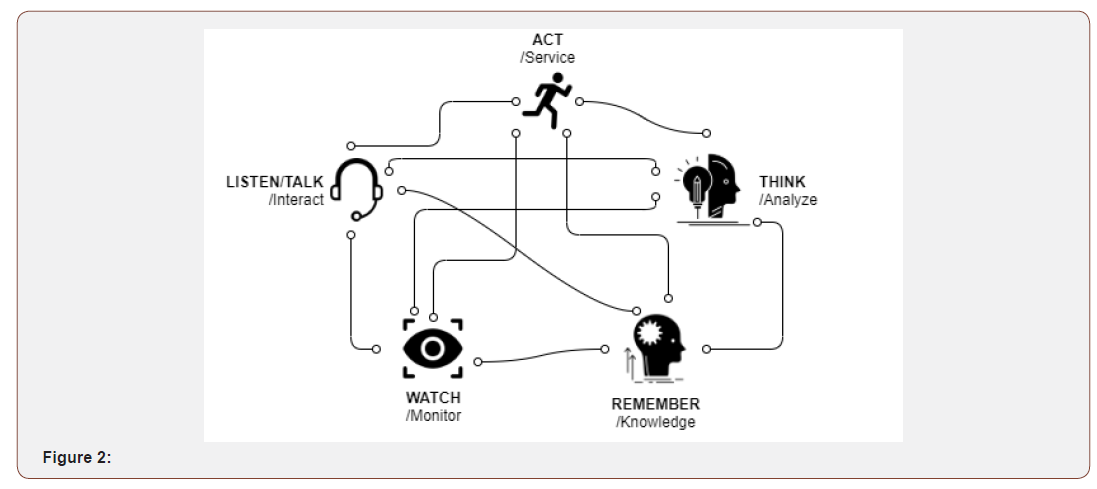Authored by Saurabh Kewlani*,
Overview
Intelligent automation is the combination of artificial intelligence (AI) and robotic process automation (RPA) that is used to create smart business processes and workflows that think, learn, and make decisions on their own. It represents an evolved stage of automation in which machines mimic human actions and possess cognitive capabilities, including machine vision, natural language generation (NLG), speech recognition, and machine learning (ML). Such kind of machines with automated intelligence assimilate vast amounts of structured and unstructured data, analyze, understand and learn on the go, and then intelligently automate processes to bring in more operational and business efficiency. This may involve processing millions of documents and applications a day, identifying and resolving issues within each, and synthesizing improvement recommendations. The concept of automation in the digital world is evolving, and the technology is progressing by adding more capabilities of the human thought process into machines each day.

Different from Robotic Process Automation
RPA is a programmed bot that mimics human actions, whereas AI is the simulation of human intelligence by machines. According to IEEE Standards Association, RPA refers to the use of a “preconfigured software instance that uses business rules and predefined activity choreography to complete the autonomous execution of a combination of processes, activities, transactions, and tasks in one or more unrelated software systems to deliver a result or service with human exception management.” And AI is “the combination of cognitive automation, machine learning (ML), reasoning, hypothesis generation and analysis, natural language processing and intentional algorithm mutation producing insights and analytics at or above human capability.”
On the most elementary level, RPA is associated with “doing” whereas AI and ML is concerned with “thinking” and “learning” respectively. Intelligent Automation is simply the amalgamation of the above.

The Five Senses of Intelligent Automation
Robotic Process Automation (RPA)
A software automation tool that is used by organizations to automate tasks which were previously done by human beings across applications and systems. This helps in saving time and manpower. Daily manual tasks such as information extraction and cleaning through user interfaces that are already there in the system can be automated. The robot is assigned a User ID and it can perform tasks such as accessing and extracting email contents, executing calculations, generating reports and checking files based on predefined conditions.
Workflow processor
A process-management software system tool that consolidates tasks performed by groups of humans and machines where the human’s task is to manage the robot. Using this tool, the users can track the complete end-to-end process in real-time and the software system can look over the handoff between different teams like robots and human users and provide statistical data in case of hold-up.
Machine learning
Algorithms that can learn from data, derive and identify patterns in structured data though supervised and unsupervised learning techniques and make decisions with minimal human intervention. Supervised algorithms learn from labelled data sets of inputs and outputs and then provide the predictions on the new inputs. Unsupervised algorithms try to learn by extracting features and patterns on its own using un-labelled data. Machine learning and advanced analytics could be a game changer for the insurance industry as it can help in claims processing, insurance advise, prevent fraud, reduce cost structures and can help in risk management. It can also derive insights from the data which will help the company gain competitive advantage.
Natural-language Generation (NLG)
A software process that can automatically translate observations from data into a language people use for reading and writing by following rules. As NLG helps us converse with the system that has access to our data, the interaction becomes much more natural. There’s a difference between getting a report and having a conversation and NLG helps us fill the gap between those two. Internal and External management reports can be generated automatically by using structured performance data as an input for natural-language.
Cognitive agents
A powerful agent that can handle time consuming manual tasks and free up human resources to tackle more complex tasks. Cognitive agents are built by combining machine learning and natural-language generation and is capable of mimicking the human brain by using data mining, pattern recognition and Natural Language Processing. It can execute tasks, communicate, learn from data sets and can identify and extract contextual elements. Cognitive agents can be used to support employees and customers over the phone or via chat, such as in employee service centres.
Future Prospects
Intelligent Automation connects humans, business processes, and technologies to augment business growth, drive revenue, reduce costs, mitigate risk, and deliver an exceptional user experience. The key advantage of using an Intelligent Automation solution is that one can achieve straight through processing (with minimal human intervention). The downsides are increased costs and project complexities. With Intelligent Automation, progressive organizations are already transferring advanced operational and cognitive processes to machines – solving complex business problems at a rapid rate, far beyond that of human beings, thereby enhancing productivity, quality, predictability, and agility while decreasing time to market – at a reduced cost to the business.
To read more about this article...Open access Journal of Robotics & Automation Technology
Please follow the URL to access more information about this article
https://irispublishers.com/ojrat/fulltext/intelligent-automation-the-future.ID.000505.php
To know more about our Journals...Iris Publishers
To know about Open Access Publishers





No comments:
Post a Comment